Advertisements
Advertisements
प्रश्न
In parallelogram ABCD, the bisector of angle A meets DC at P and AB = 2 AD.
Prove that:
(i) BP bisects angle B.
(ii) Angle APB = 90o.
उत्तर
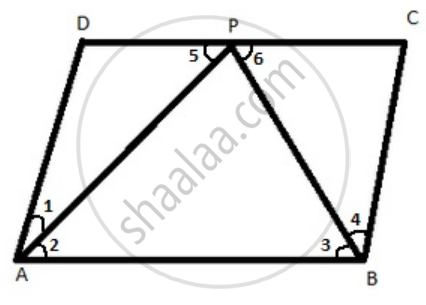
(i) Let AD = x
AB = 2AD = 2x
Also AP is the bisector ∠A
∠1 = ∠2
Now,
∠2 = ∠5 ...[ alternate angles ]
Therefore ∠1 = ∠5
Now
AP = DP = x ...[ sides opposite to equal angles are also equal ]
Therefore
AB = CD ...[ opposite sides of parallelogram are equal ]
CD = 2x
⇒ DP + PC = 2x
⇒ x + PC = 2x
⇒ PC = x
Also, BC = x
ΔBPC
⇒ ∠6 = ∠4 ...[ angles opposite to equal sides are equal ]
⇒ In ∠6 = ∠3
Therefore ∠3 =∠ 4
Hence BP bisect ∠B
(ii)
Opposite angles are supplementary
Therefore
∠1 + ∠2 + ∠3 + ∠4 = 180°
⇒ 2 ∠2 + 2 ∠3 =180° .....[ ∠1 = ∠2 , ∠3 = ∠4 ]
⇒ ∠2 + ∠3 = 90°
ΔAPB
∠2 + ∠3 ∠APB = 180°
⇒ ∠APB = 180° - 90° ...[ by angle sum property ]
⇒ ∠APB = 90°
Hence proved.
APPEARS IN
संबंधित प्रश्न
In the alongside diagram, ABCD is a parallelogram in which AP bisects angle A and BQ bisects angle B.

Prove that:
- AQ = BP
- PQ = CD
- ABPQ is a parallelogram.
In the given figure, ABCD is a parallelogram.
Prove that: AB = 2 BC.
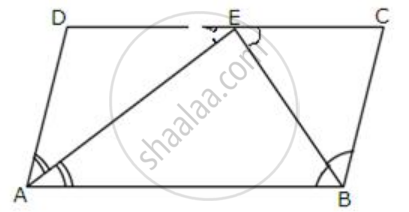
The following figure shows a trapezium ABCD in which AB is parallel to DC and AD = BC. 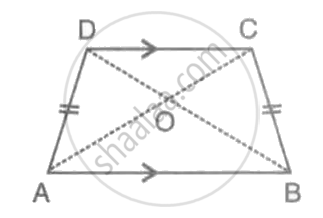
Prove that:
(i) ∠DAB = ∠CBA
(ii) ∠ADC = ∠BCD
(iii) AC = BD
(iv) OA = OB and OC = OD.
Points M and N are taken on the diagonal AC of a parallelogram ABCD such that AM = CN. Prove that BMDN is a parallelogram.
ABCD is a parallelogram. The bisector of ∠BAD meets DC at P, and AD is half of AB.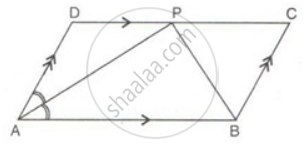
Prove that: ∠APB is a right angle.
In the given figure, MP is the bisector of ∠P and RN is the bisector of ∠R of parallelogram PQRS. Prove that PMRN is a parallelogram.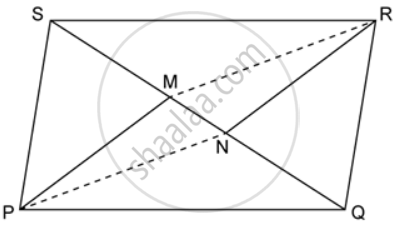
In a parallelogram ABCD, E is the midpoint of AB and DE bisects angle D. Prove that:CE is the bisector of angle C and angle DEC is a right angle
In the given figure, the perimeter of parallelogram PQRS is 42 cm. Find the lengths of PQ and PS.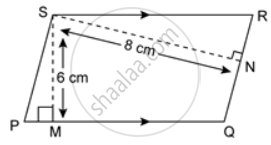
In the following figure, it is given that BDEF and FDCE are parallelograms. Can you say that BD = CD? Why or why not?
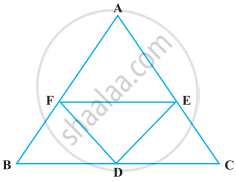
Construct a parallelogram POUR in which, PO = 5.5 cm, OU = 7.2 cm and ∠O = 70°.
